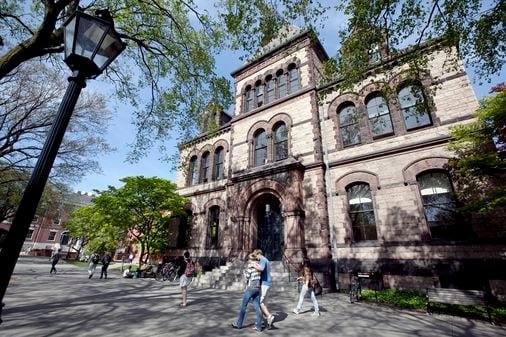PROVIDENCE — The percentage of new Black and Hispanic undergraduate students starting college at Brown University has nosedived a year after the Supreme Court ruled that higher educational institutions could not consider race in admissions, according to demographic figures released by the Ivy League institution on Friday.
In June 2023, the US Supreme Court, in a 6-3 decision, declared that universities were barred from taking into account a prospective student’s racial background when evaluating their application for admission, effectively ending race-based affirmative action. Experts had raised fears that the move could be detrimental to improving diversity in college campuses across the country.
On Friday, Brown University, which last year expressed disappointment with the court’s ruling but said would adhere to its instructions, revealed that of the 1,725 new first-year students, 9 percent identified as Black or African-American. This was 6 percentage points down from last year. Hispanic or Latinx students made up 10 percent of the new class, down 4 percentage points from 2023. Meanwhile, Asians constituted 33 percent of the incoming cohort, up 4 percentage points from a year ago. Those who declined to report their race or ethnicity increased to 7 percent, from last year’s 4 percent, the university pointed out in a statement.
Overall, students from historically underrepresented groups in higher education who are set to begin classes at Brown plunged 9 percentage points to 18 percent, Brown University said.
“Even with a significant number of measures in place to ensure a diverse, talented applicant pool and enrolled class, we recognized the likelihood that declines in the number of students of color at Brown and other selective universities were widely anticipated across the country,” Logan Powell, associate provost for enrollment and dean of undergraduate admission, said in a news release.
The university said it worked hard to avoid “a more precipitous decrease in racial and socioeconomic diversity,” by adding questions on the application to better understand students’ experiences, and increasing outreach and relationships with affinity groups and community organizations to encourage diverse students to apply.
“Brown’s commitment to a diverse campus community in every sense remains unchanged, and the first step in admitting a diverse class is ensuring that talented students of every background apply,” Powell said.
Brown is one of several highly competitive schools to report declines in the percentages of underrepresented first-year students in recent days. Tufts University recently said students of color in its first-year class dropped to 44 percent, down from about 50 percent the prior year; Amherst College reported 38 percent of its incoming class identified as students of color, down from 47 percent in 2023; and the Massachusetts Institute of Technology reported that 16 percent of first-year undergraduates identify as Black, Hispanic, Native American, or Pacific Islander, down from 25 percent in recent years.
Public universities may be seeing different results. At University of Massachusetts Amherst, officials reported that the 2028 graduating class was “the most diverse in the university’s history.”
Higher-education watchers feared that the high court’s ruling in two lawsuits challenging admissions practices at Harvard University and the University of North Carolina at Chapel Hill would lead to fewer students of color enrolling at highly selective institutions, as was the case at competitive schools in California after a 1996 statewide ban on affirmative action there. MIT blamed its decline in underrepresented first-year students on inequities in K-12 public school systems.
“We expected that this would result in fewer students from historically underrepresented racial and ethnic groups enrolling at MIT,” Stu Schmill, MIT’s dean of admissions and student financial services, said in a news story published by the university. “That’s what has happened.”
Other elite institutions, however, have fared better than expected. Princeton University in New Jersey reported minor change to the demographic makeup of its first-year class this year — just one point drop in the percentage of students of color for this year’s cohort. Yale University in New Haven also saw its numbers of Black, Native American, and Latino students remain mostly unchanged, though the percentage of Asian American students declined.
Harvard has not yet released demographic data of the incoming class.
“It’s all over the place right now,” said Natasha Warikoo, a professor of sociology at Tufts University, who’s written books about affirmative action in college admissions. “I was expecting much worse.”
Warikoo said it is too early to tell why some schools were better able to maintain diversity statistics of incoming classes since most institutions invested poured time and resources into recruitment strategies to attract diverse candidates. She added that she is most concerned so far about the percentage of Black students dropping at several schools that have reported undergraduate demographic data.
“That is troubling,” Warikoo said. “The origins of affirmative action back in the early 1960s was really about making space and opportunity for African Americans, in particular, because they were excluded from elite higher education in the past. That is the origin, and that’s who is being affected the most right now, so that, to me, is very troubling.”
Omar Mohammed can be reached at omar.mohammed@globe.com. Follow him on Twitter (X) @shurufu. Hilary Burns can be reached at hilary.burns@globe.com. Follow her @Hilarysburns.











